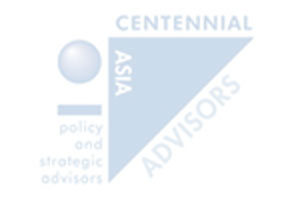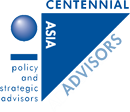212 714 0177
Free call
Asian Insights
A summary of “Asian Insights” weekly update is published here. The full version is available through paid subscription. Please click here to register your interest. Our executive will get in touch with you.

US-ASEAN summit shows the limits of US outreach to region
- While just holding the US-ASEAN summit was helpful after years of US neglect, the substance of the meeting fell short of what was needed to strengthen America’s capacity to offset China’s growing influence in ASEAN.
- The small scale of US offerings to ASEAN relative to China likely confirmed in many ASEAN leaders’ minds that the US is structurally unable to match China economically.
China: Taking the pulse of the economy heading into 2Q22
- Lockdowns are taking a toll on the supply-side while depressing domestic demand.
- Monetary data shows that credit easing channels are not working smoothly, despite policymakers’ efforts to steer credit to the real economy.
- At best, therefore, we expect a relatively soft rebound in 2H22, and full-year GDP growth at 3.5%, below the consensus of 4.2%.
The Philippines: Marcos victory reflects failure of the old elite to deliver
- Marcos won a decisive mandate. Ferdinand “Bongbong” Marcos Jr secured an outright majority, the largest in Philippines history. For the first time in years, the Presidential victor and his vice-president were from the same ticket.
- The old elite had failed to deliver the economic goods: This was why the anti-establishment President Duterte was so popular, despite his controversial conduct. Income inequality has been broadly unchanged since 1985, even as per capital incomes have doubled between 2000-2019.
- A pleasant economic surprise is possible: Marcos is likely to appoint respected technocrats to run the economy. He is also likely to be better at overcoming inter-elite obstructions that have blocked much-needed reforms.
- But there are worries about political development: The politicisation of state organs, erosion of democratic norms and the pro-China pivot will probably continue unabashedly.
Implications of Recent Developments:
- As emerging market stresses proliferate, IDR could be next: The ructions in Turkey and Sri Lanka have raised investor apprehensions about emerging market risks. Indonesia’s Rupiah has been resilient so far, but it could correct as these concerns grow.
- More signs of Asian resilience: 1Q22 GDP prints for Indonesia, the Philippines and Malaysia underscore our view that Asia-ex China can be resilient. The geopolitical crisis will definitely undermine export growth to an extent, but domestic demand will remain robust with the release of pent-up demand.
- Policy implication – timely for Asian central banks to withdraw the punchbowl: Bank Negara has moved to raise the OPR, which is likely motivated by the need to shore up the embattled Ringgit. The BSP is also poised to tighten in May, given the breakneck 1Q22 GDP print. BI cannot afford to stand pat now that its peers are in a rush to tighten, while reported challenges to the RBI’s independence will not end well for Indian economy.
09
May

Can Asia ex-China continue to be resilient?
- Asia ex-China has been relatively resilient this year despite the harsher global environment. We believe that the re-opening of the developing Asian economies ex-China will outweigh the headwinds, thus allowing this resilience to continue.
- As the pandemic eases, restrictions are being relaxed, and domestic demand reviving. Open borders will allow tourism to recover and labour market frictions to ease. Continued firmness in tech exports and higher commodity prices plus growing foreign investment and infrastructure spending will also add to growth momentum as the year progresses.
- China is the single biggest risk: it can succeed in suppressing covid infections but only at a high economic cost. But with the labour market poised to weaken further, and growing social discontent, the authorities will have no choice but to shift away from covid-zero policies and to implement much more aggressive stimulus measures – eventually. More monetary tightening is another risk as it will slow global demand and create financial market stresses.
- Overall, growth in developing Asia can remain relatively resilient. Those that pursue credible policies will be able to buffer themselves better against higher financial risks.
India: This is as good as it gets for the economy
- Corporate India booked a robust earnings season for 1Q22, which is a product of the sanguine macro backdrop and the release of pent-up demand with the easing of most restrictions. However, this may be as good as it gets for the economy.
- The bevy of backward-looking indicators – manufacturing and services PMI, GST collections and mobility trends – suggest the economic momentum will hold up in 1Q22.
- However, several headwinds loom large. The heat wave has exacerbated the coal and power shortages, impinging on industrial activity. It also threatens India’s wheat output, and export restrictions are increasingly a possibility.
- There are also concerns that the monsoon season could disappoint with the proliferation of extreme weather conditions. Last, capacity utilisation rates remain low, holding back the capex drive, despite the buoyant earnings season. We present our revised forecast for India:
Implications of Recent Developments:
- Asian political risks: Results of today’s Philippines presidential election will be known in a few days’ time. In Hong Kong, a new Chief Executive opens the possibility of a reset in the city after three tumultuous years. John Lee appears to appreciate the importance of re-establishing re-opening Hong Kong’s links with the world. He will act to stop the exodus of talent and business functions to competitors such as Singapore.
- Asian economic prospects: High-frequency data point to improving vigour in the Philippine economy with the release of pent-up demand following the easing of restrictions. With inflation overshooting its target, expect the central bank to raise rates beginning in June.
